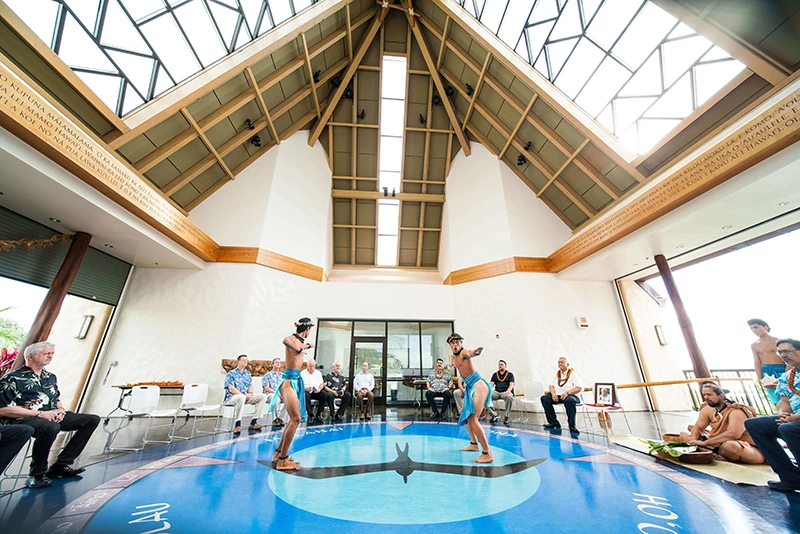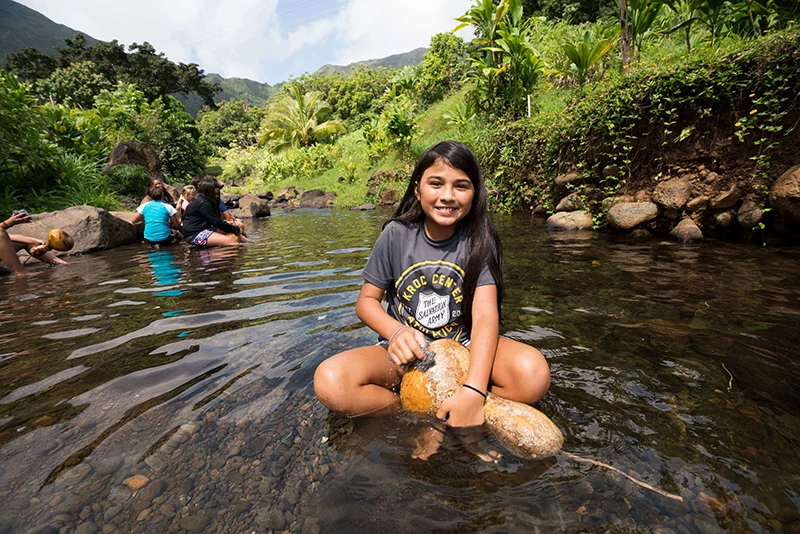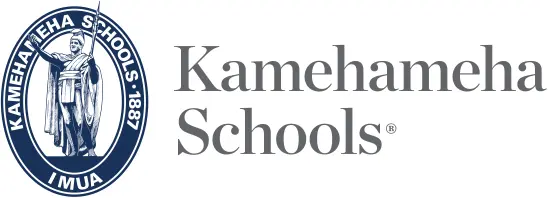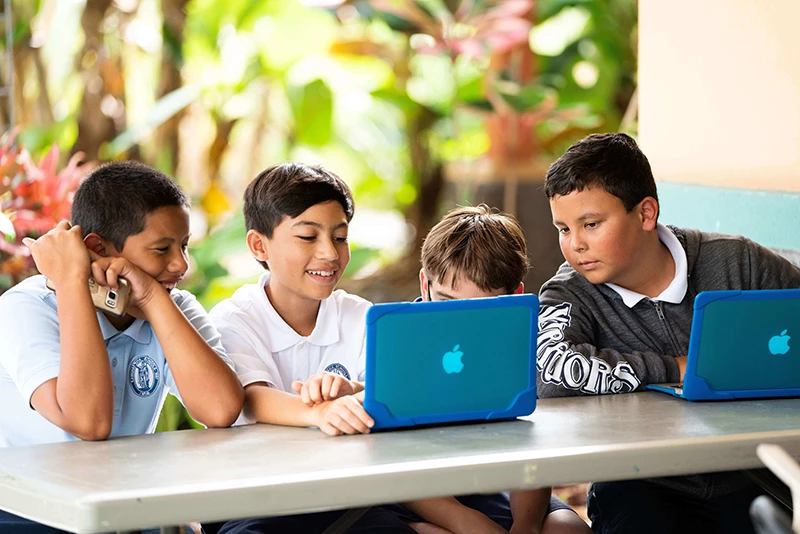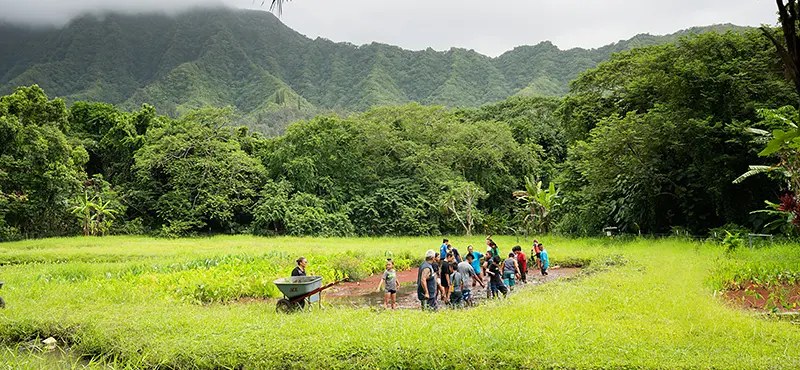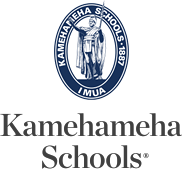When keiki sign-up for their Ho‘olauna Maui experience, they know they can expect to have a memorable time, meet new friends and learn about the place they will be spending the week. But over the course of their week, the unseen benefits when signing up are valuable speaking and listening skills they will refine that will help guide them in their future.
Part of the summer Explorations Series, the Ho‘olauna Maui residential program is one of nine regionally hosted programs across the state of Hawai‘i. Ho‘olauna (to introduce) is the second program in the series, intended for students entering grades seven and eight in the fall.
Ho‘olauna builds upon Ho‘omāka‘ika‘i by immersing students in learning experiences designed to develop a deeper understanding of the relationship between environment and people. Students engage in hands-on cultural practices, visit wahi pana (significant places) and work with community members and kūpuna within specific moku (districts).
The focus on speaking and listening skills is a part of a larger, intentional shift to provide a rigorous educational experience grounded in cultural identity.
Program Director Robert Medeiros shared how the shift has been very intentional and highlights the need to evolve to meet the growing needs of students in a way that still retains the fun enrichment and cultural activities.
“The way the activities are structured engage cultural practices. But they also engage things like group work, independent thinking and problem-solving,” explains Medeiros.
“While the focus may not be specific on math or science, the activities do focus on skills that will prepare students for what will be expected of them in the workforce.
“Speaking and listening is something we’re focused on this year. It’s part of the common core. Part of the English language arts content area.”
The Maui program introduces and familiarizes haumāna to the precious water resources of Nā Wai ‘Ehā – the four great waters of Wailuku – and their importance to the island of Maui. Students learn about how the streams were maintained traditionally and presently. They are presented the effects of channelization and diversion. They learn about condensation and evaporation.
Everything they learn is presented through a Hawaiian culture-based lens. They learn the proper names for each of the four streams: Waikapū, Wailuku, Waihe‘e and Wai‘ehu. They spend time with Aunty Hōkūlani Holt-Padilla, cultural programs director of the Maui Arts & Cultural Center, learning the mele, “He Mele Nō Kāne.”
“First two days are about setting the foundation for students in learning about the systems and challenges facing Nā Wai ‘Ehā,” shares kumu Oralani Koa, one of the team of teachers who guide students throughout the week.
“They then begin working on their projects which are presented at hō‘ike.”
To start their week, students learn about the native stream life – ‘o‘opu, ‘ōpae, hīhīwai – from Skippy Hau from the Hawai‘i State Department of Land and Natural Resources (DLNR) Division of Aquatic Resources and how without a consistent and abundant mauka to makai flow, stream life are challenged to reproduce or even survive.
They hike to see where diversions have been placed in the stream and how they take water out of the natural mauka to makai flow. They travel to Happy Valley to see the effects of channelization. They see that because of the concrete that has been installed, natural aquifer recharge is unable to take place and water evaporates due to the heated concrete.
After following the stream to the muliwai (mouth where fresh and brackish water meet), students see what kind of stream life is able to make it from mauka and what the numbers look like. They speak with Adam Wong, an education specialist from the DLNR Division of Aquatic Resources, to learn more about limu and how the disappearance of limu can signal potential problems in the future. They learn more about the dangers of overfishing and trophy fishing and the importance of finding a balance between practice and preservation.
On Wednesdays, students get to meet and spend time interviewing kūpuna at the Paukūkalo Community Center, getting a firsthand account of what water resources were like many decades ago, and gaining more mana‘o on why water is so important to Hawai‘i’s people.
Mixed in with the lessons are opportunities to mālama ‘āina, to take care of the land. Students help clear overgrown grass and haole koa at Haleki‘i Pihana Heiau. This wahi pana offers a view plane where one can see the entire moku of Wailuku. It’s estimated that over the six weeks, students cleared about 5,000 square feet and about 2.5 tons of haole koa and weeds from the heiau area. On Thursdays, students travel to Noho‘ana Farm to learn more about the importance of the stream for kalo farmers and give back through weeding and planting of the lo‘i kalo there. They also learn more about the Nā Wai ‘Ehā court case, its history, triumphs and continued struggles.
At each stop along the way, they practice the protocol they learn, oli komo and oli mahalo, to ask permission to enter and express gratitude for the time and knowledge they learn from the collaborators they interact with.
After engaging in the learning over the course of the week, students are then given a task to work in groups to present on a topic that they’ve learned that week. They can choose the format their presentation takes place – from project boards, PowerPoint presentations or even composing a mele. But each student must participate and work together with their groups to make the presentation at their hō‘ike.
On Friday morning, after spending the night working on their projects, students get a chance to rehearse and hear feedback from their kumu and receive questions from their peers. They refine and finish their presentations and displays and ready themselves to demonstrate all that they have learned throughout the week.
Their kumu remind them of the role they are now playing.
“This week you were students, but tonight you are the kumu,” shares Koa. “Make sure this is your best work. You guys lived it this week. Share those experiences with the people.”
At their Friday evening hō‘ike, parents, community members and program collaborators have a chance to hear and see the finished presentations. And the students do not disappoint, sharing the knowledge they learned in an articulate way, inspiring and bringing joy to those who see them, showcasing the valuable skills they’ve learned and will be able to apply in the future.
Hawaiian Resource Coordinator Kalani Pe‘a reminds students of their kuleana moving forward.
“You have a responsibilities to mālama your ‘ohana, to mālama your community, to mālama yourself and to aloha ‘āina, to love your land,” shares Pe‘a.
The week in the end is a whirlwind. But each student can leave knowing that not only did they gain a lot of new friends and lessons about the importance of wai and the water cycle, but also that they know how to take and share that information with others. Which, from the excitement following their presentations, is something they plan to do.
Applications for the 2016 Explorations Series are available on January 4, 2016. Students entering grades six to nine are eligible to apply for one of the three programs. Returning applicants should complete their renewal packets, which are due on January 30. New applicants should complete their applications by February 16, 2016. Visit www.ksbe.edu/admissions for more information or visit the Explorations Series page for specific program details.
Apply for a culture-based summer program today!
Applications for the 2016 Explorations Series are now available.
Students entering grades six to nine are eligible to apply for one of the three programs.
Returning applications were due on January 3.
New applicants should complete their applications by February 16, 2016.
Visit the KS Admissions website for more information or visit the Explorations Series website for program details.
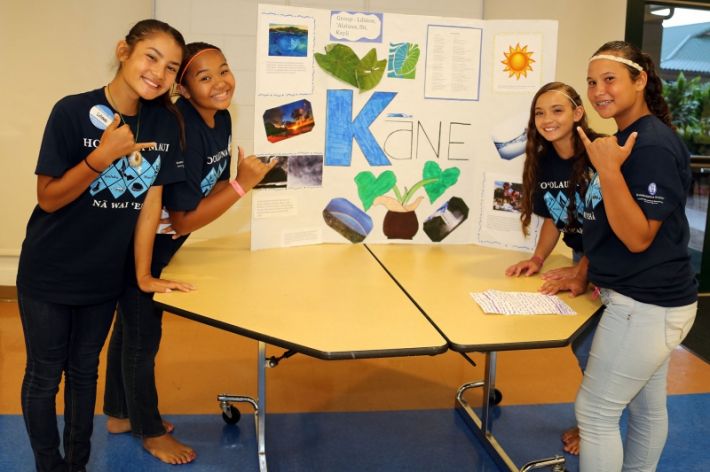
Ho‘olauna Maui students present their final project at the program's hō‘ike.

Monday morning, students travel to Kūka‘emoku (‘Iao Needle) and ‘Iao Valley to learn more about the battle of Kepaniwai.

Haumāna hike near ‘Iao Nature Center to see firsthand where a diversion has been installed, restricting the water's natural mauka to makai flow.

Haumāna travel to Happy Valley to learn about the effects of channelization, why it was installed and how it impacts the mauka to makai flow.

Students practice aloha ‘āina at Haleki‘i Pihana Heiau clearing weeds and invasive haole koa from this wahi pana. Throughout the program's six summer session, students clear about 5,000 square feet and about 2.5 tons of haole koa and weeds from the area.

Kumu Oralani explains the muliwai for Wailuku stream and the stream life students can expect to find there.

Program collaborator Skippy Hau (right) gives feedback to students on their presentations.

For their final assessment, haumāna are asked to write a letter home describing what they learned about water resource management, why that's important and what they plan to do differently when they return home.
TAGS
explorations series,
hoolauna,
hawaiian culture based education
CATEGORIES
Kaipuolono Article, Newsroom, Community Education
Print with photos
Print text only

